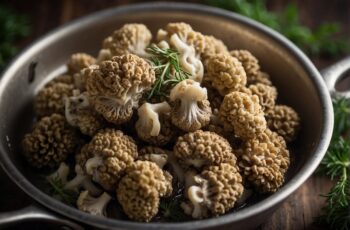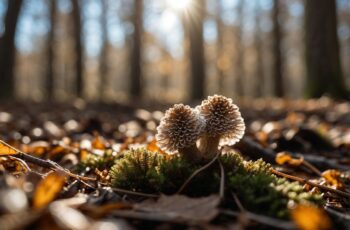As the seasons change, so too does the landscape of the forest floor. For foragers and culinary enthusiasts, the shift of seasons marks the eagerly awaited beginning of mushroom season. Your ability to harvest these wild delicacies is influenced heavily by seasonal changes. Spring often signals the start of mushroom hunting, with morels being some of the first fungi to greet the warming soil.

Throughout the summer, a variety of mushrooms continue to flourish, taking advantage of the damp conditions often found during these warmer months. As a seasoned forager, you know that each mushroom species has its preferred weather, with some thriving in the balmy days of summer, while others wait for the cooler, moister climate of fall.
Even winter has its offerings, with species like the velvet foot and enoki making their appearance. Understanding when to start looking for mushrooms in your region is crucial, and knowing the intricate relationship between climate, temperature, and seasonal transitions will catapult your foraging adventures to new heights. Keep an eye on the temperatures, particularly when they begin to hover in the sweet spot for mushrooms—daytime highs in the 70s and nighttime lows in the 50s—which often heralds their arrival.
Key Factors Influencing Mushroom Seasons

As a forager, knowing when the mushroom season starts is crucial to planning your foraging excursions. Key factors such as climate and the specific ecosystems within your region dictate not only the abundance but also the types of mushrooms you may encounter.
Climate and Weather Patterns
Climate and weather conditions are foundational to understanding mushroom seasons. For instance, morels thrive in temperate regions during the spring when rainfall and temperature work in tandem to create moist soils after the risk of frost has passed. Conversely, hot and dry conditions can delay or shorten the growing season.
- Rainfall: Consistent moisture encourages mushroom growth.
- Temperature: Warmer weather triggers spore release but extreme heat may be detrimental.
- Snowmelt: In areas like the Pacific Northwest, melting snow provides necessary moisture for fungi.
Regional Variations in Mushroom Seasons
Ethical foraging demands awareness of your local environment. Regions such as the northeast and the Pacific Northwest traditionally see more bountiful seasons due to their climate and habitats, as compared to drier areas like parts of California. The Upper Midwest states like Michigan and Minnesota observe their peak season from spring to fall, each offering a different variety of mushrooms.
Typical Mushroom Season Timeframes
While the timing of the mushroom season can fluctuate yearly, morel mushrooms often appear from March to May across the eastern and central United States, transitioning from southern states like Tennessee and Kentucky northward as the season progresses.
- Spring: March-May, favored by morels.
- Summer: June-August, prime for chanterelles.
- Fall: September-November, when hen of the woods appears.
Environmental Factors Affecting Growth
Mushrooms flourish in particular environments. Soil quality, elevation, and proximity to certain types of trees, such as ash or elm, are important. Microclimates offering shade and moisture can be hotspots for edible mushrooms. Morels, for instance, are fond of disturbed ground near dying elms or in burn sites where a recent fire has occurred.
Mushroom Species and Their Seasons
Your success in mushroom hunting is intertwined with the knowledge of specific mushroom species and their preferences. Morels favor early spring, chanterelles appear with the summer warmth, oyster mushrooms can be found almost year-round, and fall brings porcini, maitake (hen of the woods), and lion’s mane. Be mindful of the species you target and their optimal conditions to boost your foraging endeavors.
Remember, the exact timing of mushroom seasons can vary, and it pays to stay updated with local foraging communities or resources like the US Forest Service’s Mushroom Harvesting Guide for the most accurate information.
Practical Tips for Mushroom Foragers
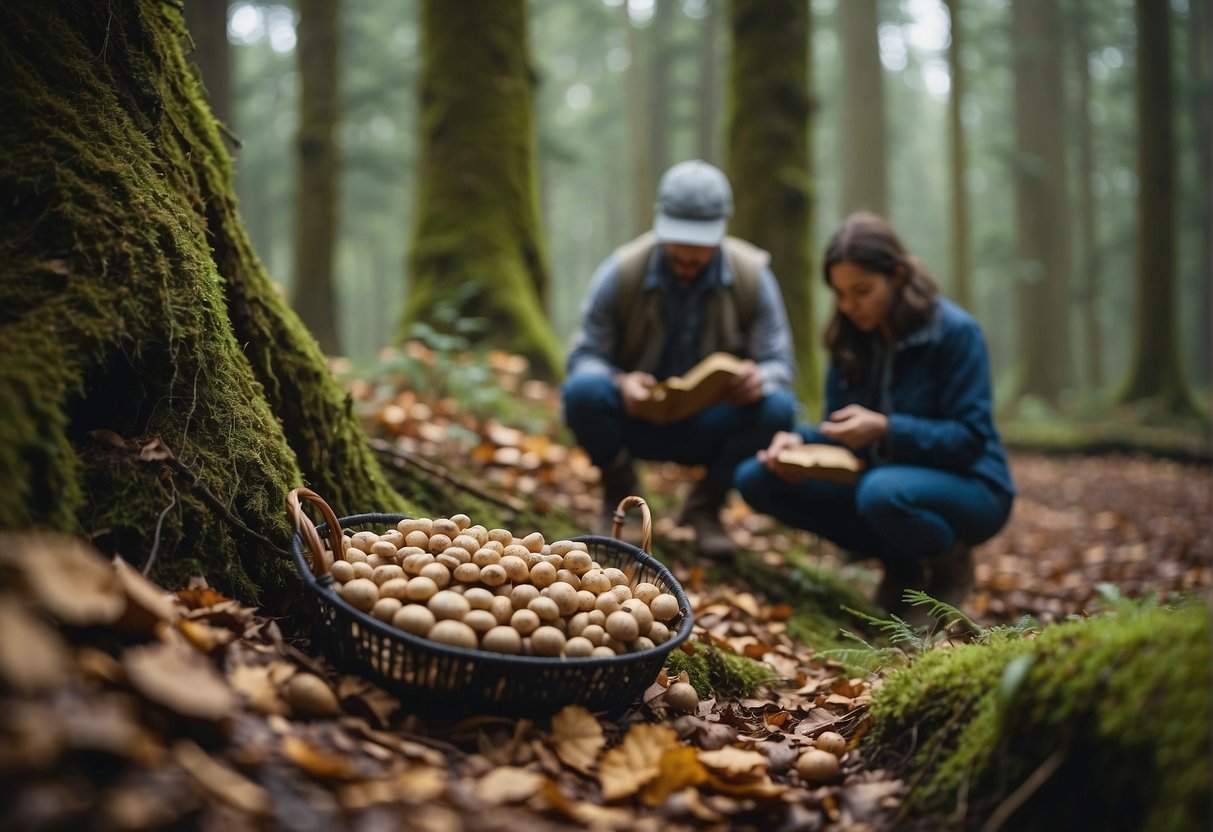
Embarking on mushroom foraging can be rewarding and enjoyable. Keep these critical points in mind: gather the right tools, know which varieties are safe to eat, understand how to forage responsibly, and learn the best methods for storing your finds.
Tools and Techniques for Mushroom Hunting
- Basket or mesh bag: To allow spores to disperse as you carry your finds.
- Sharp knife: For clean cutting and minimal damage to fungi and habitat.
- Field guide: To help with mushroom identification.
- Compass/GPS: For navigation and tracking foraging spots.
Pro Tip: Learn tree identification, as many mushrooms grow near specific tree species. Hunt after rain when temperatures are mild for optimal mushroom size and abundance.
Identifying Edible Versus Toxic Varieties
- Reference regional field guides or use apps with a comprehensive mushroom calendar.
- Always cross-verify mushroom species. If in doubt, don’t consume.
- Learn the visual differences between similar edible and poisonous species.
Remember: When hunting specific mushroom species, such as chanterelles or morels, familiarize yourself with their toxic look-alikes.
Safety and Ethical Foraging Practices
- Never consume a mushroom unless you’re 100% sure of its safety.
- Forage only what you need. Overharvesting can harm the ecosystem.
- Respect private property and nature reserves during your searches.
Ethics: Adhere to the ‘leave no trace’ principle. Your foraging should not disrupt the habitat.
Storage and Consumption of Foraged Mushrooms
Storage Techniques:
- Store fresh, clean mushrooms in a paper bag in the refrigerator.
- For long-term storage, consider drying or pickling.
Cooking Tip: Use foraged mushrooms in mushroom recipes that highlight their unique textures and flavors, cooking thoroughly to ensure safety.
By following these practical tips, your forays into the forest for mushroom hunting can be safe, ethical, and fruitful. Happy foraging!
Understanding Mushroom Biology and Ecology
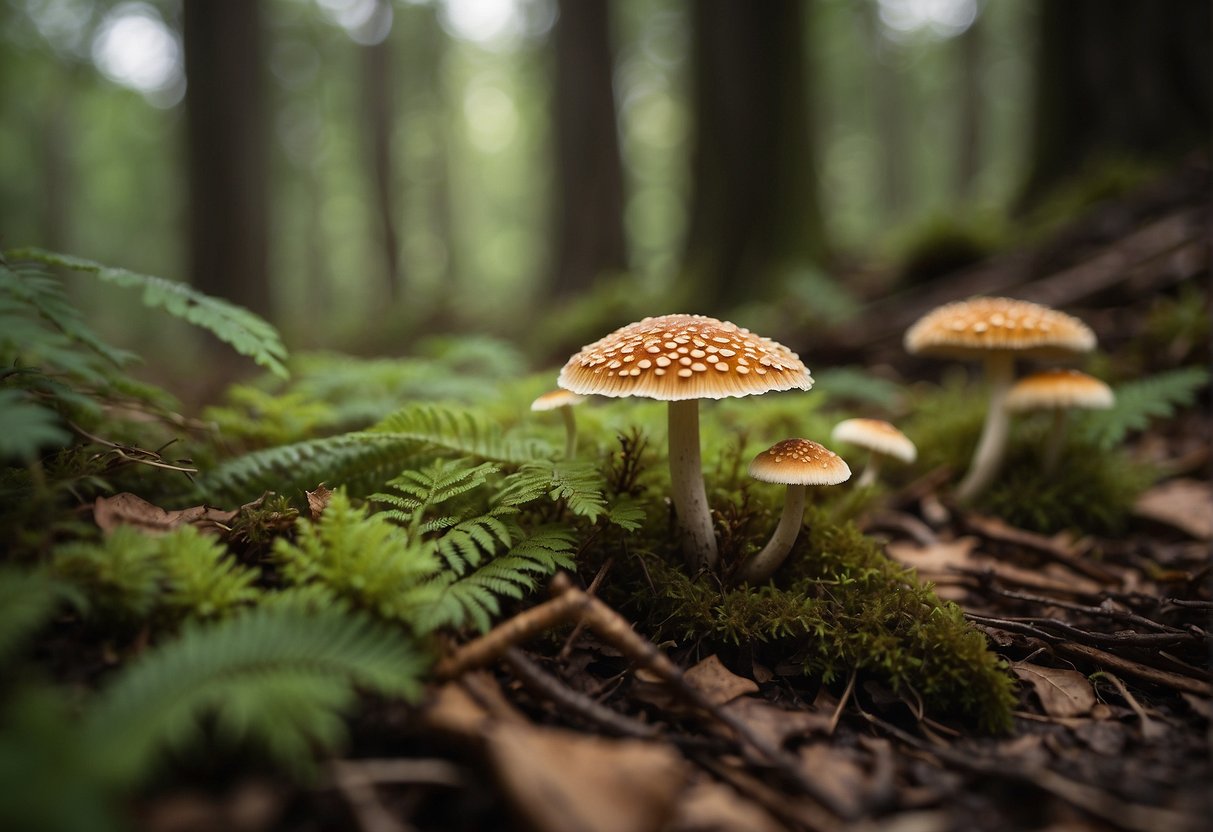
When you’re planning for mushroom foraging, your success heavily relies on understanding the intricate biology and ecology of fungi. Knowing the specifics such as habitat preferences, growth patterns, and ecological roles can make all the difference in finding the prized mushroom varieties.
Lifecycle and Reproduction of Fungi
Fungi follow a fascinating lifecycle that begins with spore dispersal. These spores act somewhat like seeds, spreading through wind or animal interaction to find suitable substrates where they can germinate and form networks of hyphae called mycelium. The mycelium is the main growing body of the fungus, residing mostly underground and sometimes within decaying wood. It’s when environmental conditions are right—often a delicate balance of moisture, temperature, and season—that the mycelium develops the fruiting bodies you recognize as mushrooms. This reproductive stage is crucial for the continuation of the species.
Mushroom Species and Habitats
Mushrooms come in an array of varieties and sizes, each with its own preference for habitat. While some thrive in the rich, damp soil of forests, others may favor mountainous areas or slopes with specific conditions. Take the morel mushroom as an example; it often grows in woodland areas, particularly in the company of ash, elm, or oak trees, whereas chanterelles prefer mossy, coniferous environments.
Roles of Mushrooms in the Ecosystem
Mushrooms play pivotal roles in our environment, acting as decomposers, symbionts, or even parasites. Their ability to break down organic matter returns essential nutrients to the soil, promoting plant health. Certain mushrooms form mutualistic relationships with trees, exchanging nutrients through their root systems—a process vital for the health of entire forests. Understanding these ecological roles is not only interesting but can also guide you to the healthiest and most prolific foraging spots, thus enhancing your experience and potentially your health benefits due to their nutritious value.
Harvesting Seasons for Popular Mushroom Types
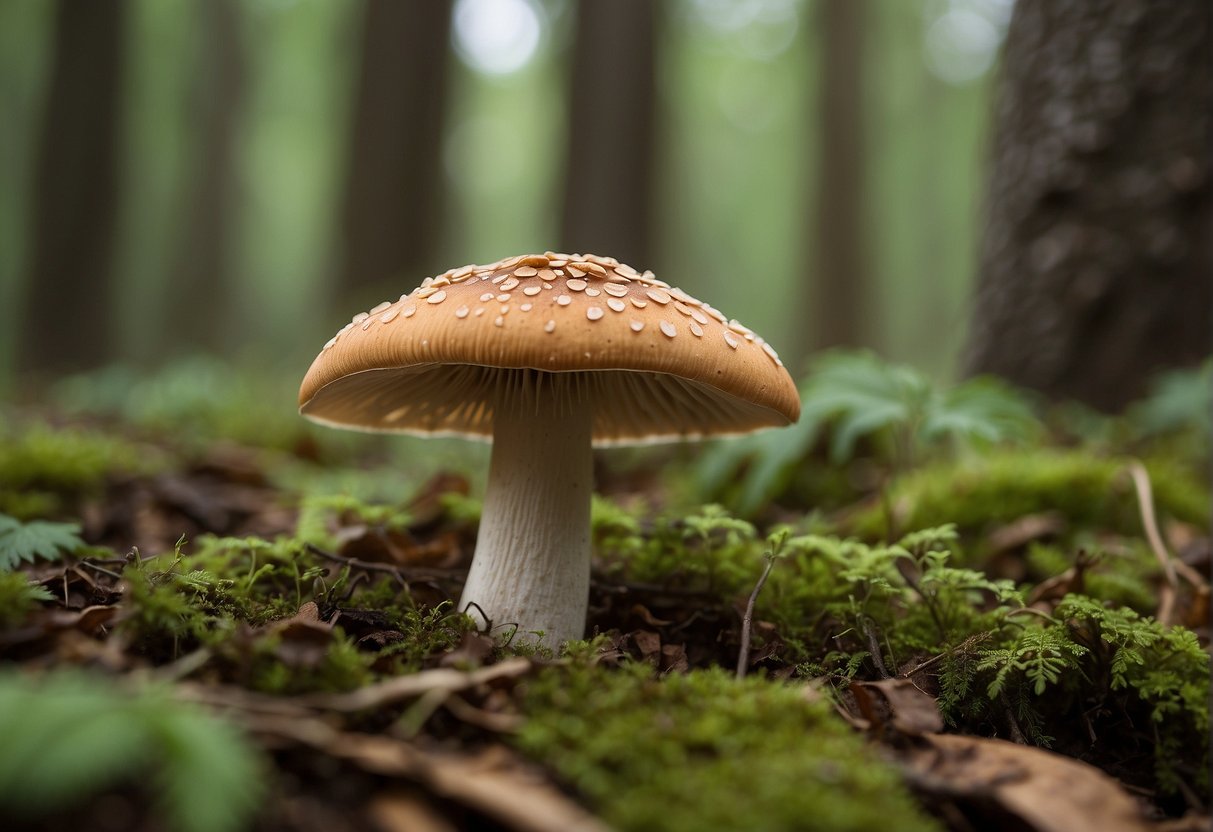
Mushroom foraging can be an exciting and rewarding outdoor activity. Understanding the seasonality of various mushroom types ensures you harvest them at their peak.
Morel Mushroom Season
In the early days of spring, following the last frost, morel mushrooms begin to make their anticipated appearance. The morel season is a brief but eagerly awaited time for foragers, usually spanning from late March to May, depending on local climate variables such as temperature and soil moisture. True enthusiasts track this period closely, knowing that black morels come first, followed by the coveted yellow morels.
Chanterelles and Other Fall Varieties
As summer wanes, fungi enthusiasts gear up for the arrival of fall mushrooms. By late summer and throughout the fall, forests become home to a stunning variety of mushrooms. Among these, the sought after chanterelles and their distinct apricot scent peak from September to November. During this period, other varieties like chicken of the woods, hen of the woods, and the elusive black trumpet also flourish, offering a robust palette of flavors for those looking to enrich their mushroom recipes.
Year-Round and Cultivated Varieties
It’s a common misconception that mushrooms can be foraged only in specific months. Some species are, indeed, seasonal, but others, such as oyster mushrooms and shiitake, can be cultivated and foraged year-round with the right knowledge. Shiitake mushrooms, for instance, can be grown on logs and may fruit anytime from 5-18 months after inoculation, allowing for a flexible harvest period. For those who enjoy growing at home, oyster mushrooms are promising due to their resilience and quick growing cycles.
Rare and Region-Specific Mushrooms
Certain mushroom types are not only seasonally available but are also limited by geography. For instance, regional specialties like lion’s mane or reishi may be found in specific forests, with each preferring different climates and temperatures. Adventurous foragers often seek out the tailored advice provided in books or videos to locate these unique fungi. A good example is porcini mushrooms, which have a relatively short season and are highly prized, thus requiring precise timing and locale knowledge for successful foraging.
Happy foraging, and remember to always verify your finds with a reliable mushroom identification guide or expert!

